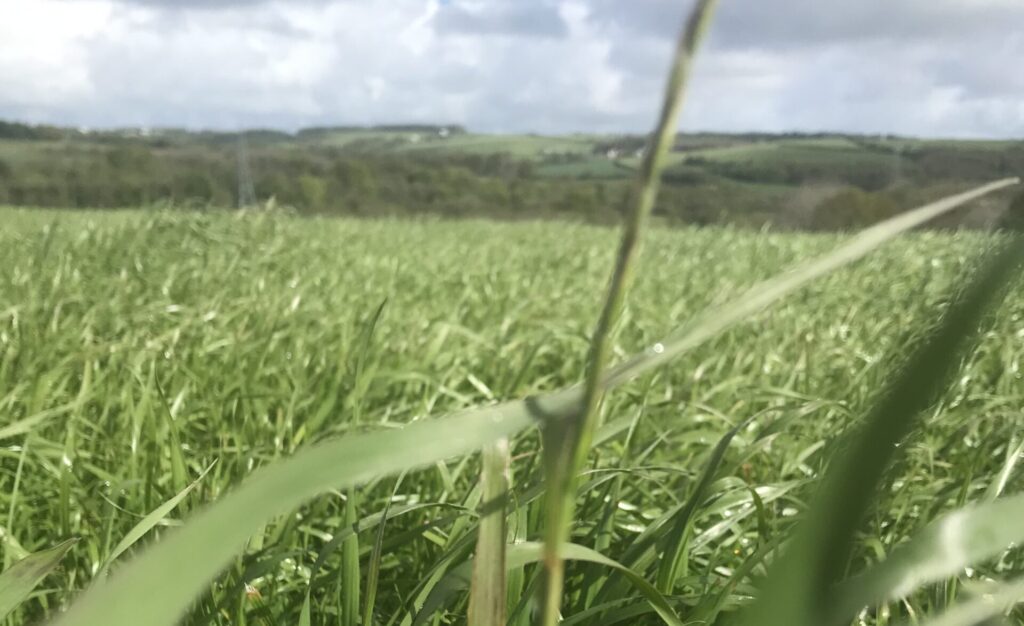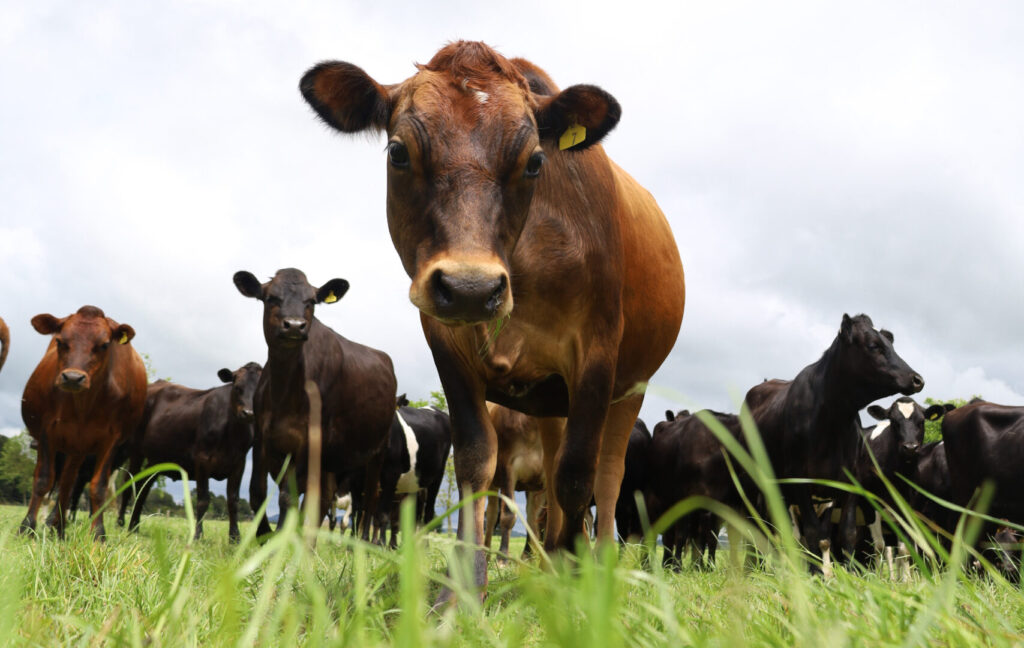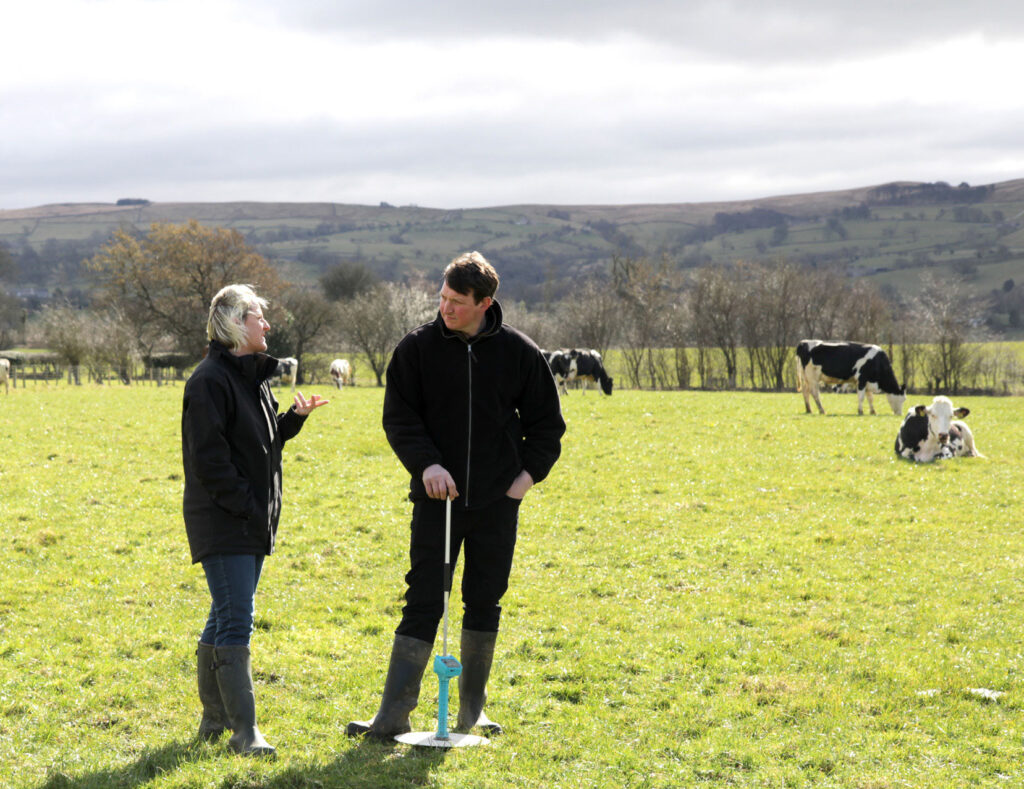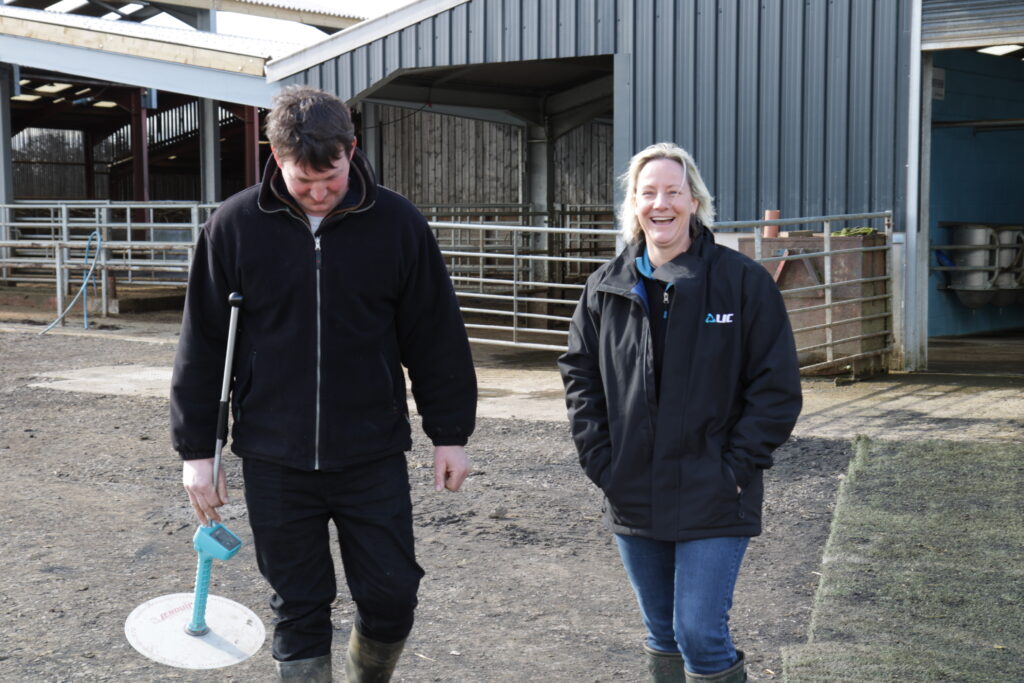Republished with permission from British Dairying.
While the UK has had its share of unusual hot summers of late, New Zealanders are accustomed to dealing with four seasons in one day on a regular basis.
For dairy farmers this means being flexible and forward-thinking in terms of pasture management and farm practices to maximise milk production – particularly since dairy is New Zealand’s biggest export earner, worth around £8.7bn/year.
Farmers in the Waikato region of New Zealand’s North Island have become particularly adept at pasture management in extreme conditions, dealing with drought in summer and floods in winter.
During a particularly warm week in late 2024, a group of 14 farmers from across the UK got to see first-hand what it takes to turn grass into the proverbial white gold in New Zealand.
Travelling as part of the first ever Cogent Breeding and LIC study tour, the farmers visited several farms under the blazing Kiwi sun to see how producers have maintained milk production by focusing on homegrown pasture, reduced fertiliser use, and efficient cropping.
For many it was their first time in New Zealand, and it was an enlightening experience seeing the similarities and differences between the farming in the two countries.
Owl Farm
Owl Farm, a demonstration farm situated on the grounds of St Peter’s School near Cambridge in the Waikato, has been reducing reliance on purchased concentrates and nitrogen fertiliser while maintaining the amount of homegrown pasture in the face of changing climatic conditions.
The farm milks around 360 cows on a dairy platform of 140ha. It uses a range of technology to help it achieve its goals, including LIC’s MINDA herd management software, which integrates with other tools like Halter wearables and milk co-op Fonterra’s smartphone tools.
Over the past nine years Owl Farm has been able to reduce its reliance on purchased concentrates from 400t dry matter (DM) to less than 100t.
At the same time it has increased the amount of grass and maize silage harvested from 80t DM to over 200t. The farm grows a range of annual and Italian ryegrasses, turnips, kale, maize and chicory, and supplements feed with palm kernel mix as required.
Demonstration Manager Jo Sheridan says Waikato farmers tend to expect a feed deficit in January and February, New Zealand’s summer, when the paddocks dry out.
“It’s a case of securing feed to get through an acute feed deficit over summer and then being able to destock once pregnancy data is confirmed. We know we need to have seed in the ground by St Patrick’s Day for when the rain comes,” she says.
“It’s all about risk management and ensuring you can milk over summer and continue to grow healthy calves, which will set them up for the rest of their productive lives.
“Every summer we score each paddock, looking at the proportion of desired species along with clover and plantain percentage. Anything that is scored one goes straight into annual ryegrass followed by a spring-sown crop ready for next summer,” she adds.
“Anything that is rated two or three will have two-to-three-year lead-in time before it’s ready to replace with a crop. You play to your strengths – graze on annuals over winter, feed crops over summer, then perennial pasture from early March, with a 12-month lead-in.”
Part of Owl Farm’s strategy has been to switch to pasture that suits the changing climate and at the same time reduce its reliance on purchased feed. This in turn lowers the farm’s overall emissions.
Changing climate
“We know that palm kernel, with a high footprint, is costing us from an emissions point of view,” says Jo.
“Over time we’ve been trying to swap it out for what we can grow on-farm without compromising animal wellbeing and we’re trying to find the forage solutions that suit our changing climate. This means choosing forages that we know will grow well in hotter soil with less, irregular, rainfall, which we can capture as feed throughout our season.”
Another part of reducing emissions is a strategic breeding programme using sexed semen and DNA profiling to selectively breed replacements from high genetic merit cows. This targets high feed conversion efficiency and low emissions, along with selection pressure for productive traits.
Efficient nitrogen use also plays a role. Just like in the UK, New Zealand has rules on the amount of synthetic nitrogen that can be applied to grazed pasture. In the UK this ranges from 120kg/ha on sugar beet to 300kg/ha for grass. In New Zealand, synthetic nitrogen application to grazed pasture is capped at 190kg/ha. Dairy farmers must record and report their nitrogen use annually.
Over the 2023/24 season, Owl Farm used just 90kg N/ha, down from 161kg/ha in 2017/18. In turn, its emissions reduced by 2,697kg CO2e/ha.
“We want to work with nature’s biological nitrogen system,” says Jo. “So we want to match the supply of nitrate with the uptake of nitrogen by our ryegrass. We make sure to put nitrogen on when the soil temperature and moisture is conducive to the plants growing.”
Manako Farm
An hour south of Owl Farm, another farm is taking steps to refine its pasture management and adjust its feed. Southern Pastures’ Manako Farm in Tokoroa, near Rotorua is a 429-ha farm comprising 357ha of dairy, 48ha of bush and wetlands and 12.8ha of forest, with a 1000-strong herd split into two mobs.
Back in 2012 when Southern Pastures took over the farm, 30% of the cows’ diet was imported supplementary palm kernel. The company was eager to change the regime and installed a new feed pad and infrastructure to allow it to incrementally swap out palm kernel and increase the amount of pasture produced on-farm.
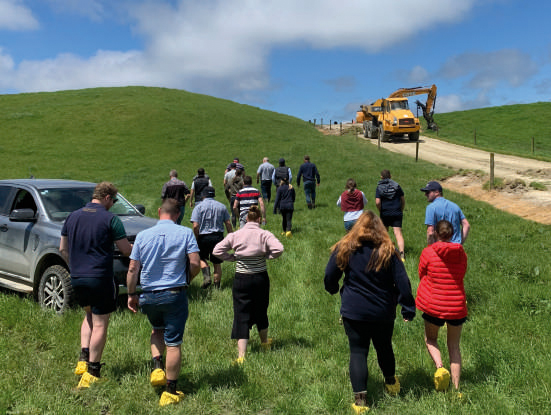
Supplementary feed
The farm is now palm kernel-free, although Director of Farming Mark Bridges admits it has been a journey. “We had to spend some significant dollars on getting prepared for that. It wasn’t something you just took out – 30% of the diet. So we set up for the space of having supplementary feed infrastructure,” he says.
“One thing that we do a little bit differently to others is we’ve set up what we call our 10 Star Certified Values, which are audited by Assure Quality, a government organisation. All our farms are audited under this and have been since 2017.”
The 10 values stipulate that each farm adheres to the following: Grass-fed diet, non-genetically modified organisms, 365 days’ free-range cows, high animal welfare, high human welfare, no palm or tallow products, environmental sustainability, antimicrobial stewardship, climate change mitigation, no added hormones.
“The key part of it all is that we are grass-fed,” notes Mark. “So we defined what grass-fed meant to us and then we’ve marketed that: 96% of our cows’ annual diet is grass-fed and this can include maize, grass silage and winter grazing.
“The four percent of the diet that doesn’t make that criteria can come in the form of New Zealand-grown maize grain in the North Island or barley and wheat from the South Island. We can also use a little bit of dried distillers’ grain coming out of New South Wales Australia,” he adds.
Soil health is a crucial component of pasture management and Southern Pastures has introduced dung beetles to Manako Farm as part of a trial.
Research has found dung beetles improve pasture productivity, soil biology and carbon content, reduce surface water runoff, and also reduce methane emissions by tunnelling and burying activity. The business also has permanent bee populations on all its farms as a natural means of pollination and preserving biodiversity.
“When I look at photos from 10 years ago, the grass was yellow,” explains Mark. “The land was barren. In our first year we grew a lot of clover and hardly any ryegrass. But over the years it’s just got better and better.”
